NASA's Largest Rover at Mars
Mars Perseverance rover was sent to Mars during the 2020-2021 opposition. This was the 5th rover that NASA successfully landed and controlled on Mars. It was built on the design that was used for Mars Curiosity rover, with some improvements based on NASA's experience building rovers for exploring the red planet. It also weighs more than its older brother, Curiosity. Perseverance landed on Mars on February 18, 2021 and has traveled ~11.46 miles in 770 Martian days. It is now well into the third Earth year on the red planet. The rover has cached 33 samples. On July 24, 2025, the Jet Propulsion Laboratory posted The 33 Sample Tubes Collected by Perseverance. This page contains links to detailed information on each sample.
Perseverance carried along a helicopter named Ingenuity that was designed to fly on the red planet. Ingenuity is the first machine to successfully fly in the Martian atmosphere. As of this update (April 2023), Perseverance has been on Mars for over 2 years and the cute little helicopter has far exceeded his mission planner's expectations by completing its 50th flight on April 13, 2023. On that trip, Ingenuity flew 322 miles or about 1,056 km over the surface of Mars.

Mars Perseverance Rover
Perseverance rover is sometimes referred to as "Persy". It is about the size of a car, ~10-feet long, 9-feet wide, and 7-feet tall (~3m x 2.7m, x 2.2m), and weighs a bit over 1,000 kg. Some parts of the Mars 2020 mission was based on the successful Mars Science Laboratory mission that delivered the Curiosity rover to Mars where it has been exploring since August 2012.
Perseverance launched on July 30, 2020 on a United Launch Alliance Atlas V-541 rocket from Cape Canaveral in Florida. Its target landing site was Jezero Crater.
Perseverance was protected in the spacecraft during the transport from Earth to Mars. The spacecraft was composed of the cruise stage that supported the whole vehicle during the 7-month cruise to Mars; the descent stage that had 8 engines to slow the final descent and carry the rover to the surface. The rover was lowered on cables that placed it on the surface gently, upright and on its wheels. The backshell had thrusters that fired to guide the rover through entry, descent, and landing (EDL). A heat shield protected the rover from the atmosphere during the descent to Mars.
Find out more about Perseverance trip from Earth to Mars on the Mars2020 page at Astra's Stargate - or - go to Reaching the Red Planet on this page.
Perseverance rover science objectives:
Perseverance is seeking signs of possible past microbial life in Mars' ancient habitable environments. It will find and study the type of rocks that can preserve signs of that life. Perseverance will be collecting rock and soil samples and storing them on the Martian surface. Perseverance is also testing the Martian atmosphere for the ability to produce oxygen that will enable human survival on the red planet.
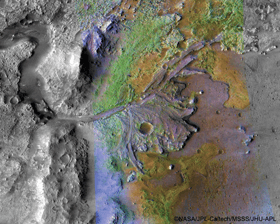
Perseverance will be studying Jezero Crater, considered a good place to search for signs of life. Billions of years ago, the crater basin was a lake that was being supplied by a river. The river was forming a delta and the result of that process can still be seen today. The rock and soil that Perseverance samples at Jezero could help answer questions about the existence of life beyond Earth. In future missions it is planned to bring the samples back to Earth for in-depth study by scientists on Earth using equipment that is too large and complex for a rover to carry to Mars.

The image of Jezero Crater's delta was taken by Mars Reconnaissance Orbiter (MRO). It shows the delta made of sediments that were carried by an ancient river. Instruments on MRO have shown that water has altered some of the sediments in the crater so perhaps there is still water below the surface.
Jezero crater is located on Isidus Planitia, located near the well-known Martian feature of Syrtis Major. Jezero crater is 45km in size, so it will not be easily seen on the small image that shows the crater in a small section of the USGS map of Mars.
Mars 2020 Perseverance rover will collect samples that will be retrieved from Mars by future Mars missions that are being developed. Percy will drill core samples from ~30 locations that have promising rock and soil (called regolith) targets. Those samples will be cached on the surface awaiting pick-up.
Because so much of Percy's task on Mars is devoted to the study of rock and regolith, it is easy to think of the rover as a geologist, but that is not the only purpose it will fulfill on Mars. The rover will also try to produce oxygen from the carbon dioxide gas that makes up the Martian atmosphere.
The rover carries a small helicopter on its belly called "Ingenuity". The Mars Helicopter is a technology demonstration — it is a test, attempting the first powered flight on the red planet.
Perseverance Instruments
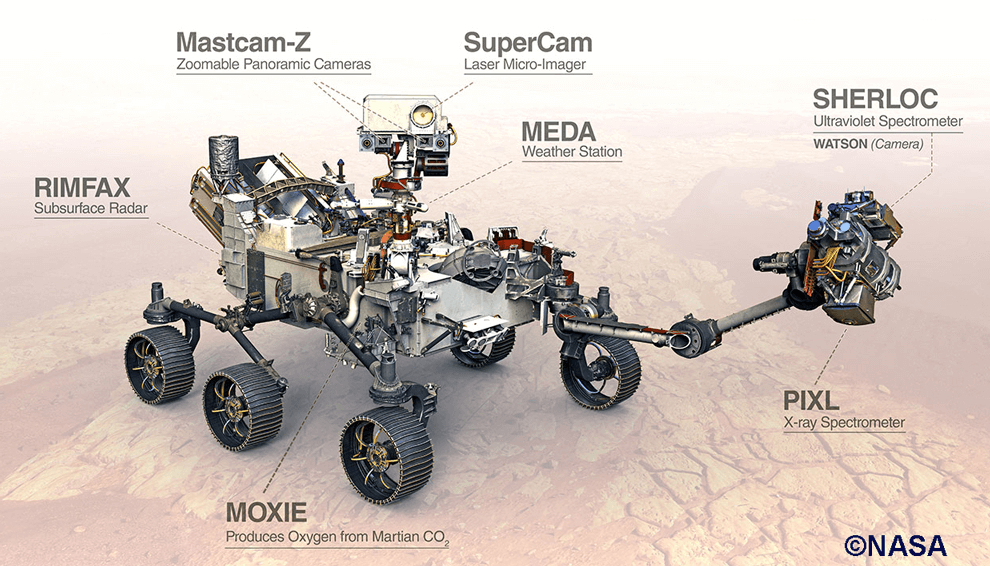
Mastcam-Z is a camera system that is mounted on the rover’s mast. The cameras can zoom in, focus, and take 3D pictures and video at high speed. It allows the rover to make detailed examinations of distant objects.
Mars Environmental Dynamics Analyzer (MEDA) is a set of sensors that measure temperature, wind speed and direction, pressure, humidity, radiation, and the size and shape of dust particles.
Mars Oxygen ISRU Experiment (MOXIE) is an experiment that will produce a small amount of oxygen (O2) from the carbon dioxide (CO) in Mars' atmosphere. MOXIE is studying a process that may help future explorers to produce oxygen from the Martian atmosphere. ISRU stands for "In-Situ Resource Utilization" that means using local resources that will eliminate the need to bring important items from Earth. If oxygen can be produced on Mars, astronauts can carry less from Earth saving fuel and lowering risk.
Planetary Instrument for X-Ray Lithochemistry (PIXL) is an X-ray fluorescence spectrometer with a high-resolution camera that can determine the composition of materials on the Martian surface that has finer detail than previous instruments sent to Mars.
Radar Imager for Mars' subsurface experiment (RIMFAX) is a ground-penetrating radar that reveals buried layers of sediment, rock, ice, water, or saltwater. RIMFAX can penetrate from the surface to 30 feet (more than 10 meters).
Scanning Habitable Environments with Raman and Luminescence for Organics and Chemicals (SHERLOC) is mounted on the rover's robotic arm. SHERLOC uses spectrometers, a laser, and a camera to search for organics and minerals that have been altered by water and may be signs of past microbial life.
SuperCam uses a camera, laser and spectrometers to seek organic compounds that could be related to past life on Mars. It can identify the chemical and mineral makeup of targets as small as a pencil point from a distance of 20 feet (7 meters).
NASA's Ingenuity Mars Helicopter
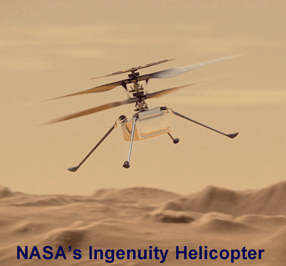
Ingenuity helicopter is small, only 19 inches high and weighs 4 pounds (1.8 kg). It is topped with a solar panel and can recharge without help from the rover. It has its own wireless communication system that enables commands from Earth to be relayed to it through the Perseverance rover. Because of its remarkable performance, the helicopter was affectionately known as "Ginny". Unfortunately, it didn't quite make it to the three-year anniversary that would have been February 18, 2024.
Because Ingenuity is so small, it demonstrated miniaturized flying technology. All the systems on the helicopter are smaller versions of the full-size equipment we use on Earth. NASA has shrunk down onboard computers, electronics and other parts so that the helicopter is light enough to take off from the Martian surface. Don't underestimate the value of this small technology demonstration, miniaturizing components and figuring out the physics of flight on Mars are not easy tasks.
Once Perseverance was on the surface of Mars and NASA mission controllers decided to release Ingenuity from the belly of the rover they detached a protective shield. Next, Ingenuity was flipped to an upright position and the landing legs were unlocked. Then the helicopter was released from the rover. The rover moved away and Ingenuity's solar panel charged in the Martian sun providing power.
Ingenuity could spin up its rotor blades for the first time although it did not take off right away. Ingenuity survived the cold Martian nights during its preflight checkout and the team continued testing. (Nights on Mars are -130 degrees Fahrenheit, or -90 degrees Celsius.) Ingenuity's original mission was intended to last 31 Earth days, with the helicopter performing experimental flights on Mars. Its flights were an astounding success and Ingenuity helicopter proved that controlled flight can be achieved on Mars. This means that future Mars missions can add an aerial dimension to their explorations on the red planet.
Why did NASA send a helicopter to Mars?
It is difficult to fly on Mars as airplanes and helicopters do on Earth. Mars' thin atmosphere makes it hard to achieve enough lift. The atmosphere on Mars is 99% less dense than Earth's, so Ingenuity is light and its rotor blades are much larger and spin much faster than is necessary on Earth. Ingenuity is a flight demonstration that will help scientists and engineers to meet the challenge of flight on Mars.
⋆ ⋆ ⋆
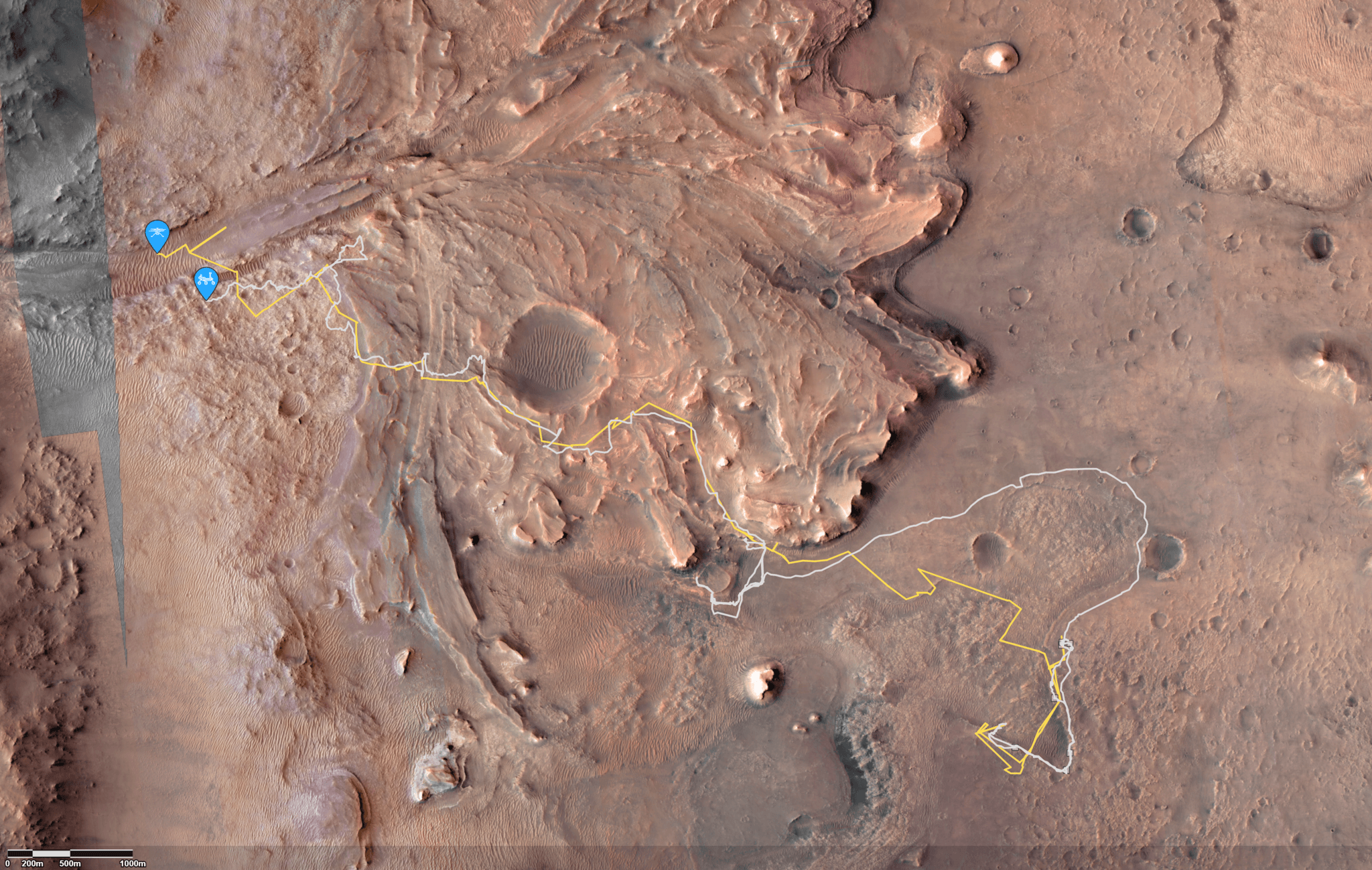
Ingenuity's Last Fatal Flight
When NASA Administrator, Bill Nelson, announced the end of Ingenuity's mission on January 25, 2024, he called Ingenuity, "the little helicopter that could." The helicopter had been keeping up with Perseverance, sometimes scouting ahead so that rover drivers could anticipate the upcoming terrain.
Ingenuity survived the communication blackout during the planet Mars' conjunction with the Sun in December 2023, rising to fly again on January 6, 2024. Ingenuity was damaged on the second flight it made this year. Although this fantastic technology demonstration was only enlisted to perform 5 flights in Mars' thin atmosphere, Ingenuity completed 72 flights. Ingenuity's mission ended on January 18, 2024 after a 32-second flight. Ingenuity sent data to Perseverance indicating that during the flight it climbed to its assigned maximum altitude of 40 feet (12 meters). During descent communications between the helicopter and rover broke down and when restored, Ginny sent back a sad image. The image of its own shadow showed that at least one blade was badly damaged. Ingenuity, the first vehicle that proved flight was possible on another solar system planet, would no longer rise again to tag along with the Mars 2020 Rover, Perseverance.
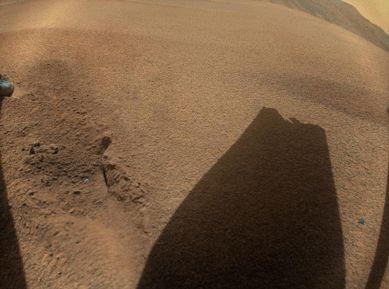

Ingenuity's Final Resting Place
Airfield Chi in the Valinor Hills
The record set by the little helicopter that could was 72 flights, for a total of ~129 minutes of flight, rising up 24 meters on its highest altitude, it maximum ground speed was 24 mph, and it flew 11 miles or 17 kilometers.
Check the NASA website for Ingenuity's flight log.
⋆ ⋆ ⋆
- Learn more at NASA's Perseverance Rover Page
Mars Sample Return
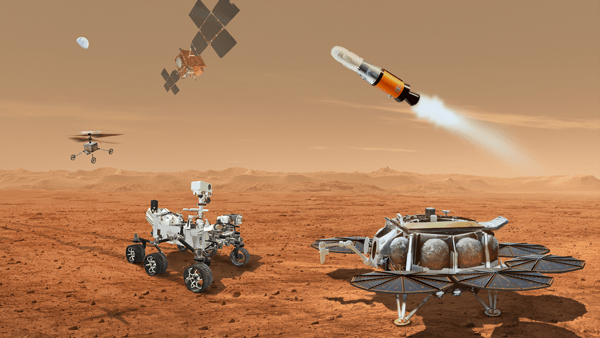
So while the Mars Perseverance rover is busily exploring Jezero crater and collecting samples, NASA and earth-based partners are busily developing the spacecraft and robots that are necessary to collect those samples from the surface of Mars. Perseverance is only the first step in this international team. Its job is to collect and cache samples on Mars.
NASA is working with the European Space Agency to plan ways to bring the first samples of Mars rock and dust back to Earth for detailed study. The Mars Sample Return Campaign Science Group gathered for their first meeting, at the Keck Institute for Space Studies at Caltech on June 28-29, 2022. This group consists of 16 experts from various space agencies and universities.
Two Mars Sample Return missions are planned to follow up on Perseverance's sample collection at Jezero Crater. The first spacecraft will land in Jezero crater, collect and launch the sample cache off the surface. The second spacecraft must capture the sample cache in Mars orbit, and bring it back to Earth in the early to mid 2030s. These samples could answer a key question: Did life ever exist on Mars? Only by bringing the samples back can we truly answer the question by using the most advanced Earth-based laboratory.
Unfortunately the sample return mission is faltering in congress. The U.S. has been spending a lot of its space exploration budget on the lunar Artemis mission that is causing science missions to take a back seat. I am confident that the sample return mission will prevail, especially because of the successful caching of samples by the Perseverance rover and for the future of Mars Exploration.
Ingenuity's success on Mars has been a game changer. NASA now plans to use a pair of helicopters to pick up additional samples stashed on the surface by Perseverance. These helicopters could bring samples back to the lander to be transferred to the Mars rocket.
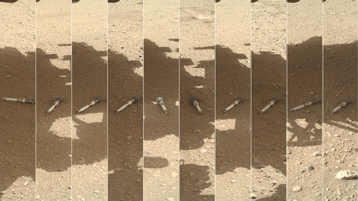
Now ready for pickup and return to Earth
Image from NASA (PIA25738)
Find out about Perseverance sample caches at NASA's Mars Rock Samples Collected by Perseverance Rover Page - - and at JPL - NASA’s Perseverance Rover Shows off Collection of Mars Samples - February 14, 2023
Get your boarding pass to take a ride on the next Mars Mission that will likely be the Mars Sample Return Mission. Just sign up on the web page and get your name to Mars as soon as the spacecraft arrives on the red planet

⋆ ⋆ ⋆
Historic Perseverance Landing
On February 18, 2021, Mars Perseverance Rover landed on Mars. Here's the first image Mars 2020 rover returned. The shadow of the rover is visible in the Martian sun.
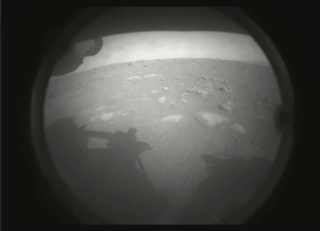
This image is from the sky crane that gently placed the Mars Perseverance Rover on the surface Mars! It is very exciting that NASA choose to put color cameras on the sky crane and the rover so that the journey to the surface could be recorded in detail. This will help engineers to send future missions to the surface. Maybe someday a sky crane will place human explorers on Mars!
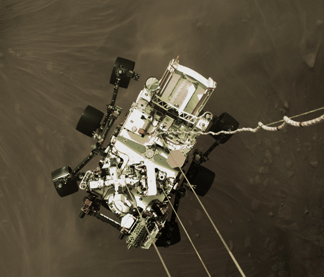
After a few weeks while NASA checked out Perseverance to be sure its mission can be successfully carried out, the rover began its journey across the Martian landscape. Here is NASA's infographic of Perseverance's landing sequence.
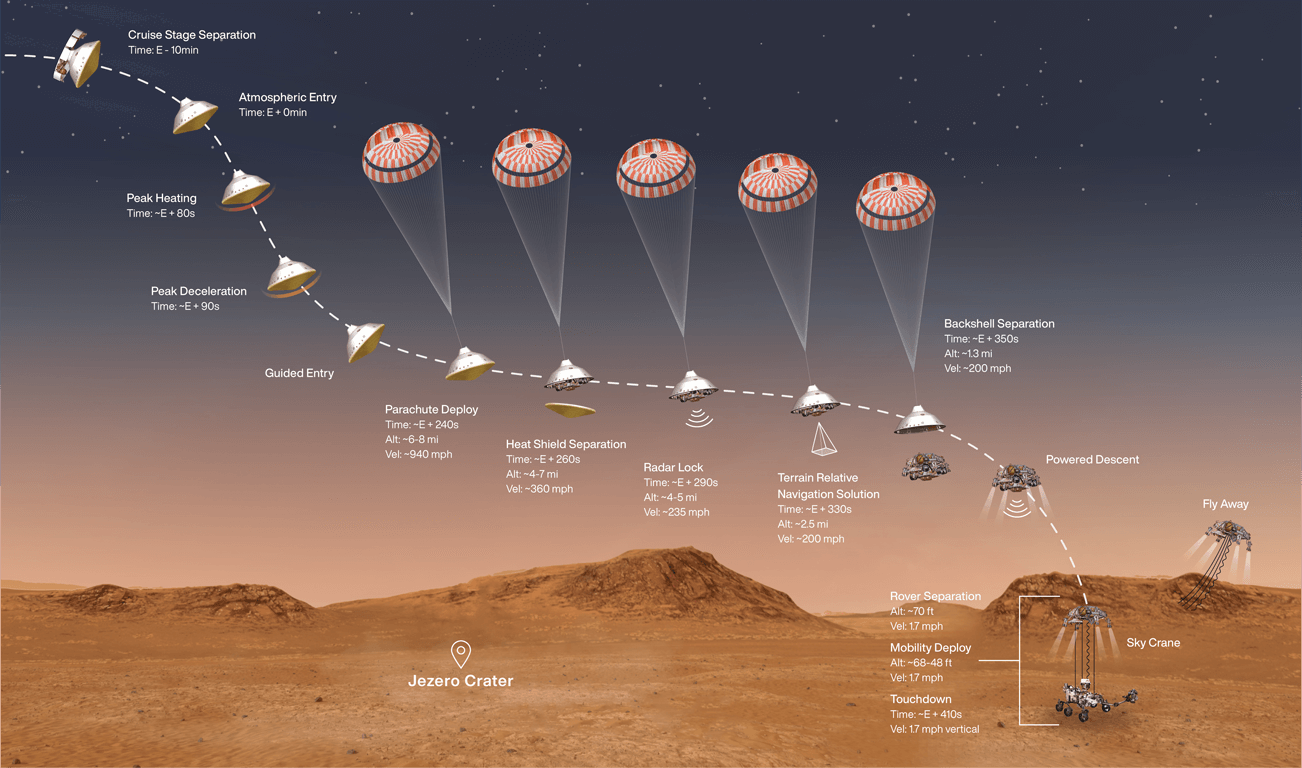
This web page is ©2025 D. E. Jenkins all rights reserved. Please use the contact page to get permission to use this content or to send comments or corrections. Images on this page are available from NASA.

